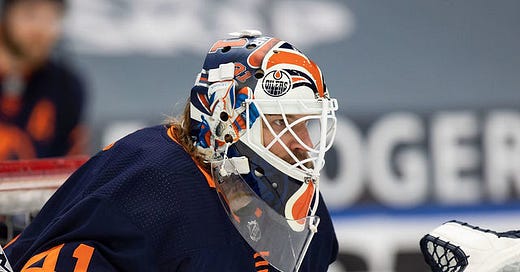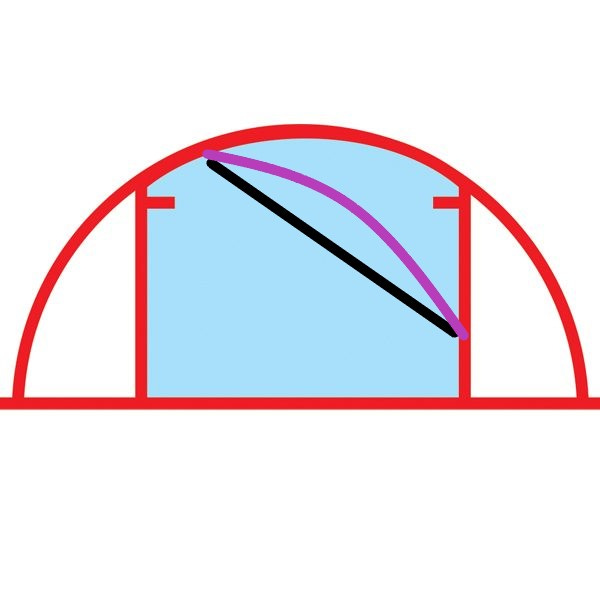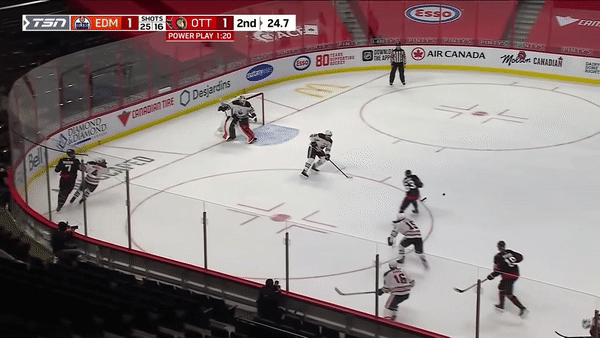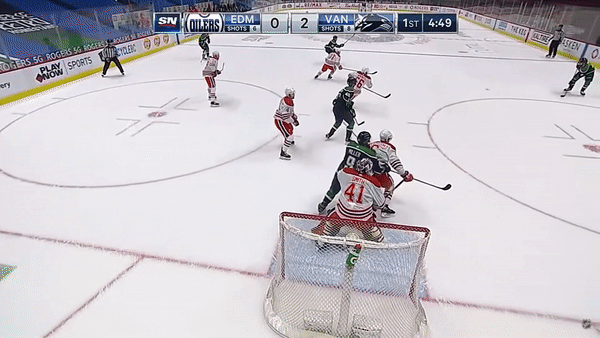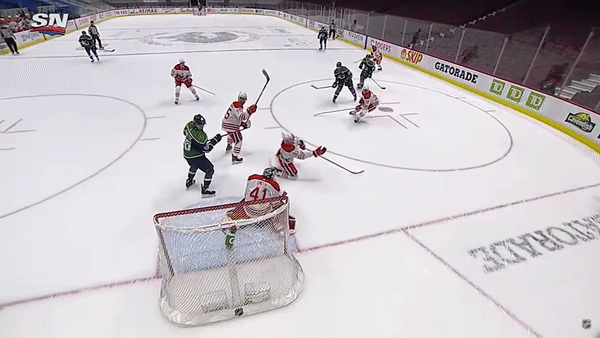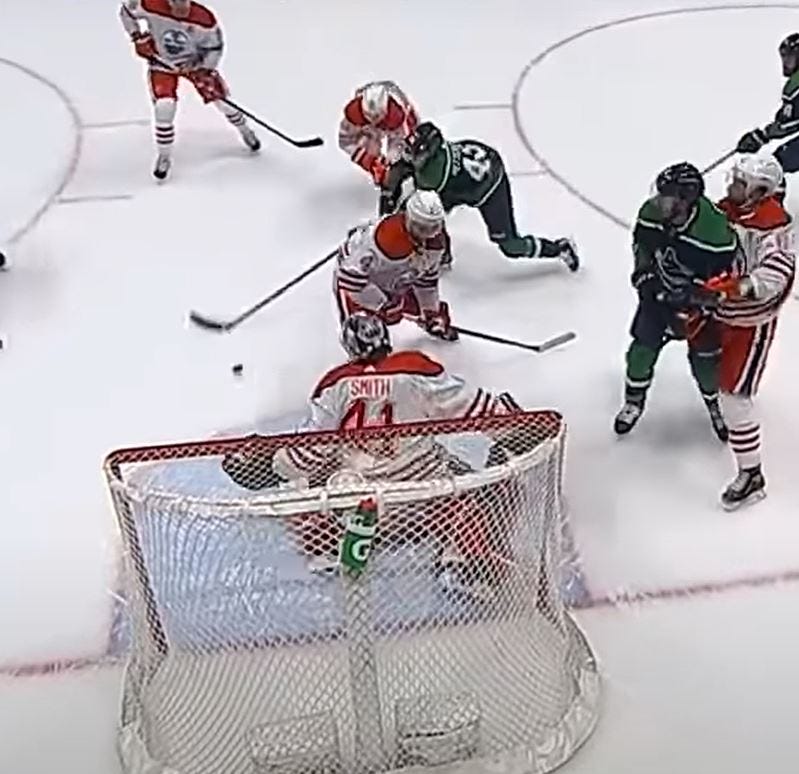Part 1 of my series on Mike Smith’s start to the season went over his tracking successes early, and how he’s struggled in this area as of late. This installment will examine Smith’s rotations when adjusting angles and beginning movements.
As detailed in the first article, Smith’s work with Adam Francilia should have helped his core strength, which should allow Smith to improve rotations. An example of the work they could have been doing can be found in this InGoal article, which describes the work Francilia has done with Connor Hellebuyck, which helped the 2019-20 Vezina Winner reach the next level. Francilia’s work specifically helps prevent counter-rotation. Additionally, Oilers goalie coach Dustin Schwartz has been known to place a large emphasis on the importance of rotations as part of a goalies movement.
For goalies, counter-rotation happens when the goalie shifts their weight or swings away from the direction they are trying to travel to create momentum for the eventual push. Martin Jones provides two great examples of this in the following tweet, with his upper body going one way and lower body going the other.



There are two main issues with counter-rotation. The first is that it prevents the goalie from taking the shortest path to the proper position. Common sense dictates that the most direct path would be a straight line between the two points. However, because the upper body rotates the opposite way, this is impossible and results in more of a semi-circle route to the new angle, represented by the purple line compared to the direct black line. The difference may seem minor, but this execution can be the difference between a save and a goal on chances with a pass.
The other issue with counter-rotation is that the goalie doesn’t move to square to the puck. When a goalie is “square” their shoulders, head, and lower body are all directly facing the puck. (This is one of the fundamental factors in goalie positioning with angle and depth being the others). This is significant because it prevents the goalie from covering the maximum amount of net at a given time. The best way to picture this is the goalie creates a shadow on the net with their body and if they turn their body, they allow more light through. Similarly, the goalie protects less net when they aren’t square. Cam Talbot actually had this problem in 2017, as described in this Oilers Nation article by Cat Silverman.
Mike Smith Early
Mike Smith was doing a great job early in his season rotating early to the new angle, allowing him to efficiently get over and make harder saves look easy. Visually, you can see how much net he covers early, and how short his movement is to get over. Here are some from the Ottawa game examples of these tight rotations that allowed him to have early-season success.
Mike Smith Lately
Where Mike Smith strived in his rotations through his first couple starts with his rotations, he has struggled lately. The first example of this was against Winnipeg, where despite a great pass by Wheeler, Smith comes across flat (body facing up ice), giving Schiefele most of the net to shoot at, as shown here



There were another 2 examples of this in the Vancouver games. In both cases, Smith is moving off his blocker side post to the middle. He starts to push before he is fully rotated, meaning his lower body is still facing the original direction, causing him to reach. This causes Smith to reach backward and to his left to try to make the save. In the first video, Petterson is able to finish, while Gaudette is not able to elevate the puck in the second clip
This still of the Petterson goal clearly show the counter-rotation, which doesn’t allow him to get over to make the save as he had done earlier in the season
Specifically for Smith, when he starts to reach and counter-rotate, he starts to learn forward and often ends up flopping on his stomach.
Mike Smith has had considerable early-season success, especially when compared to his past 2 seasons. This streak has been undeniably good for the Oilers, allowing them to bank points and rest Mikko Koskinen, who came into the season as the presumptive lead guy (and has actually had a better SV% since Smith has been healthy but that’s for another time). Early on, there were also signs that Smith has tangibly improved over the off-season, with a possible reason why a 38-year-old goalie could actually improve so late in his career. Whether it be reverting to old habits, a lack of practice time (as Koskinen alluded to in a recent interview), or simply a lack of rest, some of these improvements have deteriorated in Smith’s game, leading to poorer results as of late. For the Oilers to have success, both goalies will need to be able to win games. If I were making the decisions, I would give Koskinen a run of games to allow Smith to regain his early-season form, then rely on both goalies equally, with a slight edge to Koskinen moving forward.
Most of this article was written Sunday, so here’s a Monday update:
Kevin Woodley outlined similar views for the improvements during his interview with Jason Gregor yesterday, available here.
Smith stopped everything he faced on Monday in relief, although I thought Toronto went into a defensive shell after the first 20 minutes. Smith’s rotations were better tonight, although the bad tracking habits outlined in yesterday’s article crept up a bit on some of the “big saves” he made. Generally, these big saves look that way either because the goalie is out of position or they make a big movement during save execution, typically problems created from poor tracking.
